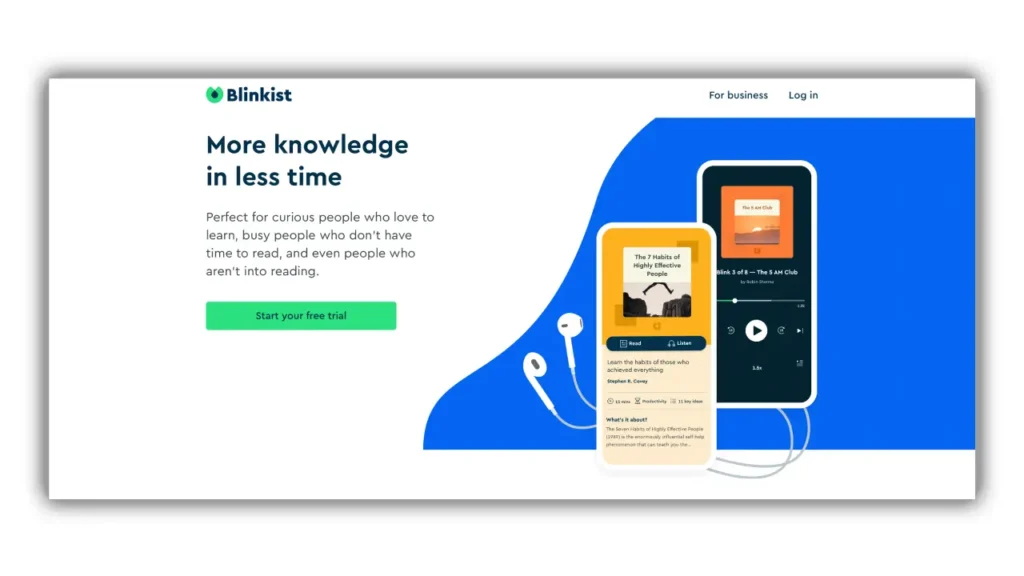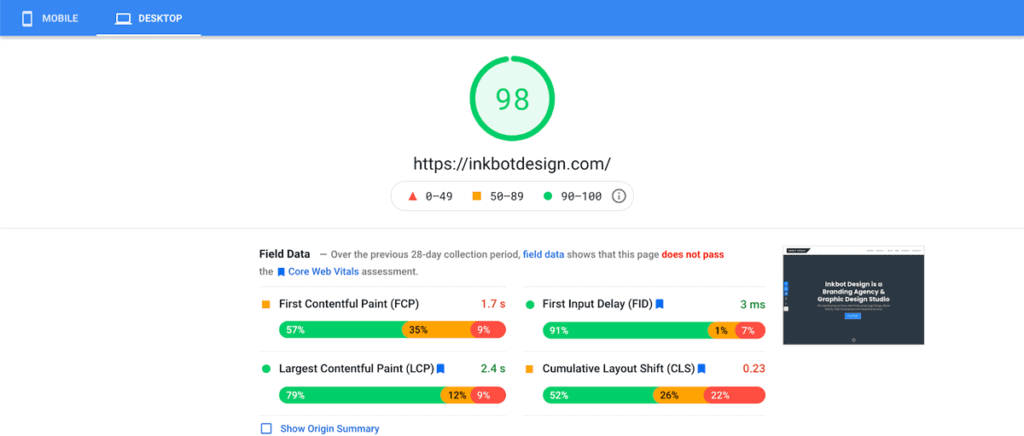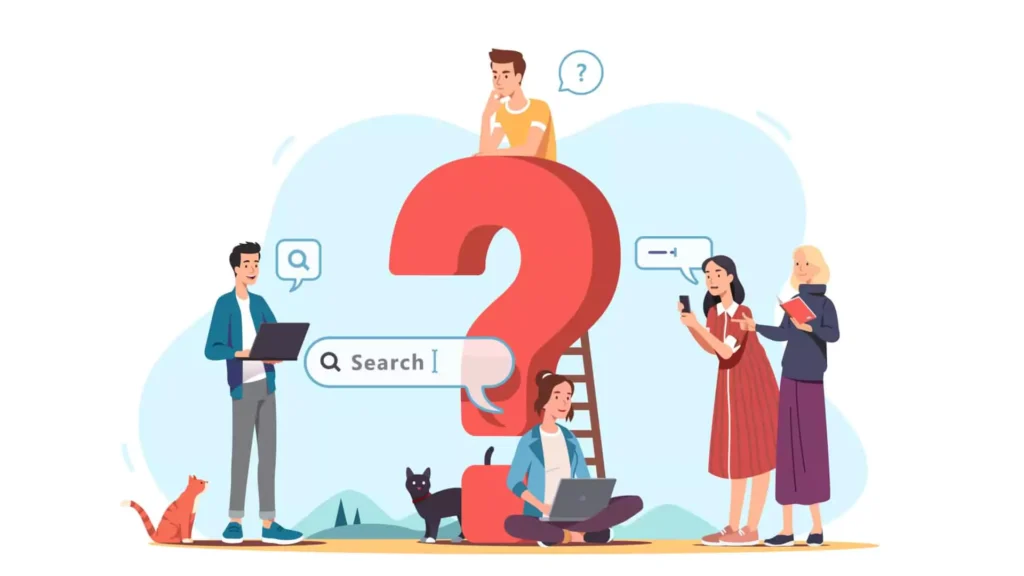Effective Web Design: The Blueprint for Online Success
Let's be honest – having an online presence is non-negotiable for businesses. Your website is often the first interaction potential customers have with your brand. And you know what they say about first impressions, right? A poorly designed site can turn people off faster than you can say “404 error.”
But a practical, user-friendly web design? That's the key to capturing attention, building trust, and converting visitors into loyal fans (and customers!). It's the digital equivalent of a well-designed storefront – appealing, inviting, and leaving a lasting positive impression.
Table of Contents
The High Stakes of Bad Web Design
Do you think having a subpar website design is no big deal? Think again! Poor web design can be an absolute dealbreaker these days. Imagine walking into a physical store with cluttered aisles, confusing signage, and grumpy staff – you likely turn around and head elsewhere. Well, an outdated or unintuitive website design has the same effect online. People have high expectations and a world of options at their fingertips. If your site doesn't meet their standards, they'll bounce faster than a superball.
The Perks of Prioritising Great UX
On the flip side, investing in effective web design pays dividends. A clean, intuitive user experience (UX) keeps visitors engaged, guides them seamlessly through your site, and boosts those all-important conversion rates. It's like having a friendly, knowledgeable salesperson showing customers around your e-commerce store. This virtual ambassador works around the clock, never needs a coffee break, and always puts the user first.
Design Trends for 2024 (And Beyond!)

Okay, so you're convinced – nailing your web design is crucial. But what makes a site look fresh and user-friendly these days? Let's explore some design trends that are here to stay:
It's a Mobile-First World
If your site isn't optimised for mobile, you're living in the digital Stone Age, my friend. Nowadays, more people access the internet via smartphone than desktop. That means your mobile experience needs to be on point – quick loading times, easy navigation, and a responsive design that adjusts seamlessly to any screen size.
Minimalism Reigns Supreme
Remember those busy, cluttered websites from the early 2000s? Yeah, let's leave those relics in the past where they belong. Today's web design is about minimalism – clean lines, ample white space, and a laser focus on showcasing only the most essential elements. It's a refreshingly pared-down approach that provides breathing room and lets your content shine. Less is more in 2024.
Interactive Animations
While minimalism rules overall, that doesn't mean websites must be static snoozefests. Micro-interactions and subtle animations can inject playfulness and delight into the user experience. I'm talking about hover effects, scroll-triggered animations, and fun tiny UI flourishes that provide visual feedback. These delightful details make websites feel dynamic, responsive, and human when executed skillfully.
Asymmetric, Broken Grid Layouts
The rigid constraints of yesteryear's formulaic website layouts? They're a thing of the past, folks. 2024 is all about embracing the unconventional with asymmetric, broken grid designs. This fresh, modern approach uses negative space, overlapping elements, and off-kilter layouts to create visually striking pages with unique flow and energy. It's organised chaos at its finest.
10 Principles of Effective Web Design

While design trends come and go, some fundamental web design tenets will always reign supreme. Here are ten essential principles to live by:
1. Establish a Clear Hierarchy
Decision fatigue is real, people. When visitors land on your site, they should instantly understand the hierarchy and flow of information. Use headings, styling, and strategic spacing to establish a visual hierarchy that guides the user's journey. With a thoughtfully structured layout, people can easily navigate your content and find what they're looking for sans stress and confusion.
2. Consistent Branding
Your website is the digital face of your brand. Keeping your look and feel consistent across pages is vital for building recognition and trust. Use the same colour palette, typography, design elements, and tone of voice throughout the user experience. It's brand-spankin' new territory – just resist the urge to brand-spank too hard and overwhelm people.
3. Responsive, Flexible Layouts
We have already covered the importance of mobile optimisation, but responsive design is crucial for all devices, my friends. Your layout should effortlessly adapt and reflow content based on the user's screen size. No awkward zooming, squinting or horizontal scrolling required – that's just user experience abuse! Flexible grids, fluid typography, and intrinsic ratios are your new best buds for crafting that elusive “Goldilocks” experience.
4. Purposeful Use of Colour
Colour has a significant impact on how people perceive and experience your website. Used strategically, it can focus attention, set the mood, and even influence consumer behaviour. But a willy-nilly colour scheme? That's just visual chaos, baby. Follow tried-and-true colour theory principles, use a cohesive palette, and consider the psychological impact of your hue choices.
5. Ample White Space
Designers and minimalists agree white space is paramount for creating breathing room and visual balance in web layouts. This negative space prevents pages from feeling cramped or overwhelming. It also boosts scannability by allowing elements to stand out. Of course, I don't mean every inch should be blindingly white – that's harsh on the eyeballs, folks. Use white space to enhance legibility and create pockets of rest for the eyes.
6. Clear Calls-to-Action (CTAs)
Every page of your website should have a clear purpose and corresponding call-to-action. That shiny red “Buy Now” button? That's a CTA in action, directing visitors toward your desired goal. Whether you want them to make a purchase, sign up for a newsletter, or download some content – make that CTA obvious, enticing, and impossible to miss. As a wise person once said… If you want people to take action, you've got to ask!
7. Typography Matters
Sure, words communicate information. But as any designer worth their Helvetica will tell you, typography is a powerful communication tool. The fonts you choose impact legibility set the tone, and influence how people perceive your brand's personality. So, thoughtfully combine typefaces for maximum impact. Pair elegant serifs with clean sans-serifs—Prioritise fonts with excellent screen readability. And for Pete's sake, use hierarchy and styling to make that copy crisp and scannable.
8. Fast Load Times
In our age of ever-shrinking attention spans, sluggish websites are an absolute no-no. If pages take forever to load, people will abandon ship before you can say, “Just a few more seconds!” Optimise images, leverage browser caching and minimise HTTP requests to deliver lightning-fast load times. Anything above 3 seconds pushes it in 2024, so don't keep your visitors waiting!
9. Easy Navigation
Websites with confusing, complicated navigation are the bane of every user's existence. If people can't effortlessly find what they need on your site, you've already lost them. Always organise your navigation intuitively based on user expectations. Use clear descriptive labels sensible categories, and consider adding search functionality if needed. The golden rule – if users have to think too hard, you've failed!
10. Feedback & Interactivity
Let's be real – using the internet often feels like screaming into an abyss. Does anyone even hear you? Effective websites provide feedback and interactivity so users feel acknowledged. Use hover states, animations, transitions, and other interactive elements to create a delightful, responsive experience. And be sure to offer human feedback mechanisms, like chat windows or prominent contact info. A little reassurance goes a long way.
Behind the Scenes: What Makes a Website Succeed

You know the old saying – “You can't judge a book by its cover.” When it comes to websites, you can judge by the outer appearance and user experience. But some crucial behind-the-scenes elements take an online presence from a pretty face to an absolute powerhouse.
SEO – Don't Let Your Site Get Lost Online
An aesthetically pleasing website is all good, but what's the point if no one can find it? Search engine optimisation (SEO) ensures your site appears in relevant search results so interested prospects can discover you. From keyword optimisation and sitemaps to schema markup and link building, SEO is a whole discipline in itself. Neglecting it is like throwing your digital masterpiece into a black hole.
Page Speed & Performance
Remember that bit about fast load times being a must-have? Yeah, page speed is about more than just impressing impatient users. It's critical in SEO rankings, conversion rates, user experience metrics, and general website performance. Snappy, responsive pages are table stakes. Use performance budgets, compression, and other optimisation techniques to create fast experiences.
Accessibility for All
Inclusive, accessible web design creates equal experiences for users of all abilities. This means considering how those with disabilities like vision or hearing impairment will navigate and consume your content. Following accessibility standards like WCAG ensures features like proper heading structure, alternative text, keyboard navigation, and more. It's not just good practice – it's vital for reaching the broadest possible audience.
Mobile-Responsive or Bust
In case you haven't caught on yet – designing a mobile-optimised experience isn't optional in 2024. It's an absolute necessity! Responsive frameworks, adaptive layouts, and accurate device testing are vital for perfecting those handheld experiences. Roughly 60% of internet traffic now comes from mobile devices. Don't be that site that forces pinching and squinting on tiny screens…
Conversion Rate Optimisation
Even with gorgeous web design, you're only as successful as your ability to convert casual visitors into subscribers, leads, or paying customers. That's where conversion rate optimisation (CRO) comes in. Through user testing, A/B experiments, analytics and more, CRO uncovers barriers and optimises for maximum conversions. Forget crossing your fingers and hoping for the best – CRO lets you tweak your website into a high-converting machine.
The Content Conundrum

Okay, so you've got world-class web design ticking all the boxes. But what truly makes people stick around on your site? What keeps them engaged and eager to take action? The answer, my friend, is compelling content – the other critical piece of the website puzzle.
Writing for Humans First
As tempting as it is to load up your pages with eye-glazing corporate jargon and SEO keywords galore, remember – you're writing for people above all else. Focus on creating clear, applicable copy that resonates with your target audience. Tell stories, educate, and speak their language. If you stuff your precious content full of fluff and optimisation tactics first, people will see right through it.
Content Structure & Flow
People's online attention spans are shorter than a goldfish these days. Capturing and holding interest means carefully structuring your content's flow. Break dense copy into easily digestible chunks using headers, bulleted lists, and short paragraphs. Front-load vital messages and use content formatting as visual signposts that guide the user journey.
Visual Content & Multimedia
In our visually-driven world, pure text alone often isn't enough to entice modern website visitors. Infuse your content with eye-catching imagery, embedded videos and gifs, custom graphics, and other visual elements. These assets make the content richer and more engaging and provide additional entry points for users to consume information how they prefer.
Holistic Content Strategy
The most impactful websites take a unified, holistic approach to content that extends far beyond the pages themselves. Think content repurposing, email nurture flows, blogs, social media, and other channels that build a cohesive brand ecosystem. You can deliver immersive, personalised experiences that drive loyalty and evangelism by mapping out content funnels and customer journeys.
UGC & Social Proof
Don't just talk to people – empower them to join the conversation, too! User-generated content (UGC) like customer reviews, testimonials, contests, and social feeds breathe authenticity into websites. By showcasing trusted voices, you build credibility and social proof that persuades people to convert. A vibrant UGC strategy turns your site into a living, breathing community hub.
Tracking Performance & Iterating

Even with all the web design prowess in the world, you can't just set it and forget it, friends. In the online realm, success hinges on your ability to track, test, tweak, and optimise.
Heat Maps & User Analytics
Where are people clicking, scrolling, or bouncing from your site? Heat maps, click maps, and quantitative user analytics are a godsend. With these insights, you can identify design friction points, track conversion funnels, and optimise experiences based on cold, complex data. Why fly blind when there are all these nifty heat vision goggles to use?
A/B Testing & Experiments
That nagging hunch you have about which CTA button colour would work better? Or which layout version users would prefer? Stop guessing and let the data decide! A/B tests and UX experiments allow you to iterate confidently based on user behaviour. Creating variations and putting them out into the wild is the only way to optimise over time.
Qualitative Feedback
Of course, human insights are just as critical as quantitative data. Tactics like user interviews, surveys, and session recordings illuminate the why and the how behind people's experiences. What motivates them or causes frustration? What particular pain points are they wrestling with? Such rich qualitative feedback is pure gold for driving customer-centric website enhancements.
Adapt & Repeat
The most future-proof websites are always in a state of evolution, never remaining static. You stay ahead of the curve by tracking the right metrics, conducting regular user research, and developing a culture of continuous improvement. Design, test, analyse, tweak, repeat – a virtuous cycle of levelling up your web presence to exceed rising user standards.
Conclusion
Phew! We covered a ton of ground regarding effective web design, didn't we? From high-level strategy down to nitty-gritty tactics, one thing is sure – crafting an optimised, user-centric online experience is paramount in our increasingly digital world.
Pretty pixels and passing design fads will come and go. But timeless user experience principles, purposeful branding, and relentless optimisation for your audience? Those are what genuinely set successful websites apart from forgettable ones. Stay curious, always put users at the heart of your process, and never stop iterating on that web design masterpiece.
In the end, though, a website's effectiveness boils down to connecting with real people and delivering genuine value. Tick all the technical checkboxes, but never lose sight of that human element. When you do it right, your online presence transcends being just another website. It becomes an intuitive, dynamic extension of your brand that leaves a positive, lasting impression on everyone interacting.
So what are you waiting for? Start designing experiences that wow today's users and the short attention-spanned masses of tomorrow!
FAQs
Isn't web design just about making things look pretty?
Absolutely not! While aesthetic appeal matters, effective web design goes far beyond surface-level visuals. It's a multi-disciplinary practice focused on creating exceptional user experiences through strategic planning, solving real user needs, and balancing form and function.
Does web design impact conversion rates and business metrics?
You better believe it! Research shows that well-designed websites with strong UX can lift conversion rates by up to 400%. Poor user experiences, on the other hand, cost businesses billions each year in lost revenue. Design directly impacts metrics like bounce rates, time on site, leads and sales.
Shouldn't I hire a cheap offshore firm to build my website?
If you want a cookie-cutter, templated site that provides a lacklustre experience, go for it. But if you want a truly optimised online presence that converts users and accurately represents your brand, investing in skilled, experienced web design talent is crucial.
How often should I update and refresh my website?
There's no one-size-fits-all answer, but in general, plan for at least an annual redesign to keep up with evolving design trends and user expectations. Audit your analytics and conduct regular user testing to identify areas needing optimisation.
What's more critical – web design or content?
It's a classic “chicken or egg” problem! The truth is, you can't achieve an impactful web presence with just one or the other. Great design and compelling content need to work in harmony, each practice informing and elevating the other. Neither should be an afterthought.
